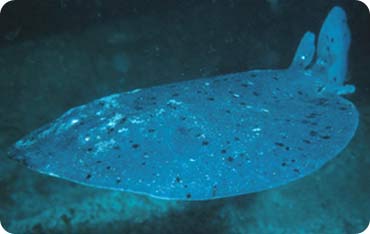When a patient in ancient Greece was in great pain -- from headaches to gout to childbirth -- a physician sometimes prescribed a dose of fish. The patients didn’t eat the fish, though. Instead, the fish gave them an electric shock that numbed the senses. The Greek name for the fish was narke, and it’s where we get the modern word “narcotic.”
 Some electric rays can generate an electric jolt up to 200 volts. Credit: National Oceanic and Atmospheric Administration, Daniel Gotshall
Some electric rays can generate an electric jolt up to 200 volts. Credit: National Oceanic and Atmospheric Administration, Daniel GotshallThe narke was a type of electric ray. Different species are found in shallow coastal waters across much of the world. A small species inhabits the Atlantic coast of the United States, while a bigger one lives off the Pacific coast.
Electric rays look a lot like their less-stimulating cousins, stingrays, with round, flat bodies. Two kidney-shaped structures on their heads generate an electric current. These structures are stacks of muscle tissue. Instead of contracting, they produce chemical reactions that generate an electric jolt. Most species produce up to 30 or 40 volts, but some can generate more than 200.
The rays use the discharges to scare off predators and to stun their own prey.
During the day, a ray buries itself in the sand and waits for a fish to swim above it. At night, it may float leisurely through the water, drifting below its prey. When a fish is in the right position, the ray curls its body upwards and zaps the prey with a series of electrical pulses. The ray then does a series of rolls or flips to drop the fish below it, where it snatches the meal and swallows it head first.
So the fish is a goner, but it won’t feel a thing.

